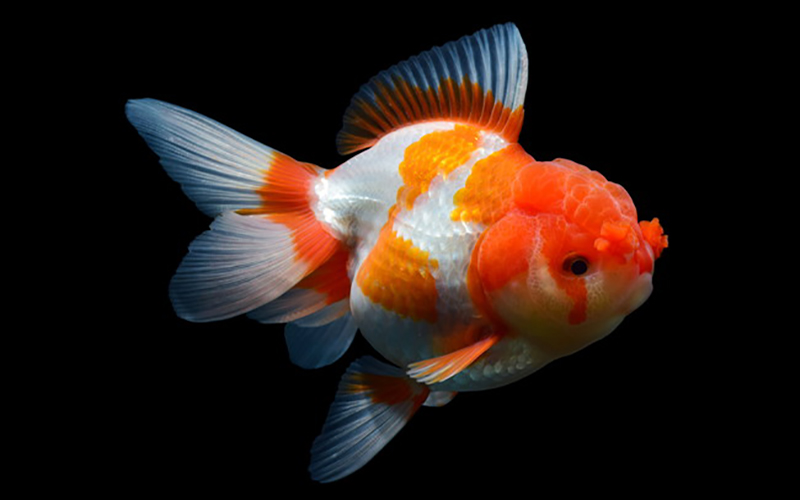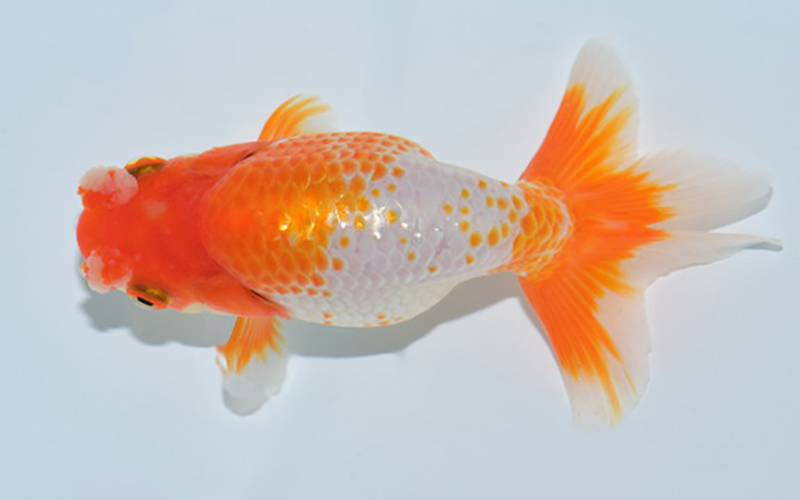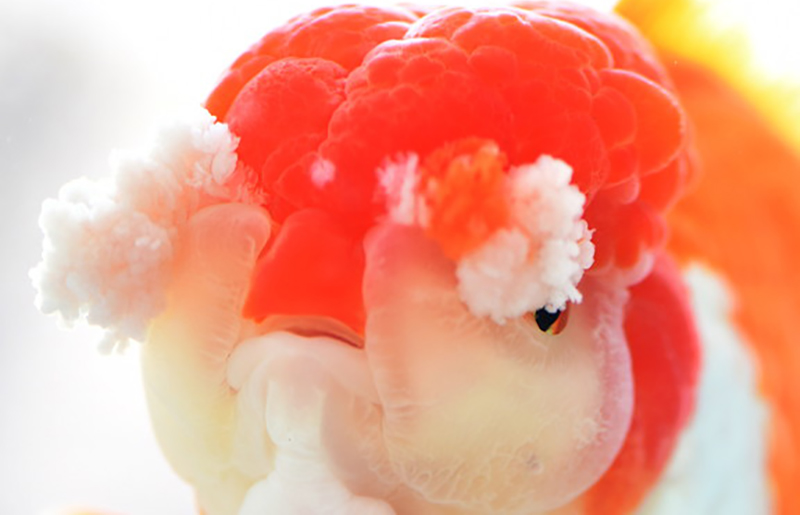ecology
The hana-busa is a goldfish in which the nuchal folds of the nose become enlarged and develop into large clusters. Although it has a greater impact than other goldfish, it is not well known. In this article, I would like to explain in detail the characteristics of the hana-busa and how to keep it.
Table of Contents

Hanabusa is,This goldfish has an enlarged nostril fold, or nasal fold, that develops into a large tuft.
Flower clusters are often found on varieties such as Chakin, Ranchu, and Japanese orchid lion's head. Those with a characteristic that is attached to the nostril folds but looks like a cluster of several tufts of rounded hairballs are called "nasal tufts. A nasal tuft that looks like a chrysanthemum flower is called a "floral tuft.
There are many unknowns regarding the process of creation of Hanabusa. Hanabusa was born in China and came to Japan.The Ise Hanabusa was produced in the Ise region of Japan (present-day Mie Prefecture) around 1897. Since the Ise Hanabusa was a Dutch-type flower cluster, a flower cluster of a variety with a dorsal fin is called a Japanese Hanabusa, while a flower cluster of a variety without a dorsal fin is called a Chinese Hanabusa.However, most of the flower clusters distributed today are produced in China. In some cases, the Japanese variety is distinguished from the Chinese variety as "flower clusters" and the Chinese variety as "mustaches.

The best way to enjoy the flower clusters is to view them from the side (side view), such as in an aquarium, rather than from above (top view). To enjoy the foci that enlarge in the nostril folds, it is recommended to view them from the side (side view), such as in an aquarium, rather than from above (top view).By viewing it with a side view, you can see the shape of the flower cluster and how it resembles a chrysanthemum flower. If you want to see if the left and right sides of the flower cluster are even, we recommend that you view it from the top. A beautiful flower cluster is characterized by even sides, a firm center, and a rounded silhouette of the flower cluster itself, so if you want to know if it is a beautiful flower cluster, it is better to view it from the top and the side.
When mixing goldfish with other goldfish and other species, there is sometimes uncertainty as to what species is good and what species is not. First,There is no general prohibition against this or that when mixing goldfish with other species.Therefore, depending on the personality and environment of the goldfish you keep, even species that are said to be bad for each other may get along well with each other. However, there is also the matter of compatibility between goldfish. If you put incompatible goldfish together, there is a high possibility that they will fight or that only one of them will monopolize the food. However, as I explained in the beginning, there is no prohibition for goldfish, so if you want to mix them, it may be OK to do so. Now, we will explain the goldfish that are compatible with Hanabusa and those that are not.
Goldfish that are most compatible with Hanabusa are Dutch-type goldfish such as Azuma Nishiki (Azuma Nishiki) and Tanchou (Tanchou).
Many goldfish with flower clusters are Dutch-type goldfish, so it is recommended to use similar Dutch-type goldfish as they are less likely to fight.
If you see a flower cluster being poked, please evacuate the area immediately.
Goldfish that are incompatible with Hanabusa are Japanese goldfish, such as Wakin (Japanese goldfish) and Comet (Japanese goldfish).
The nose, which is a characteristic of the flower cluster, is difficult to put back on if it is removed. If the nose is poked by an agile variety such as the Japanese goldfish, the nose may come off, so please try to avoid putting it in as much as possible.
If you are mixing goldfish with Japanese goldfish, be sure to keep an eye on them at all times to make sure they are not chasing the goldfish in the flower clusters.

Flower clusters are available as varieties, but are often sold as flower clusters when sold.
For example, when Ryukin-type goldfish are sold with flower clusters, they are usually sold under the trade name "Ryukin" or "Calico". Also, there are rare goldfish with flower clusters among the smaller and less expensive goldfish in aquariums. If you see a goldfish with a flower cluster, please try to keep it.
One thing to keep in mind when keeping goldfish with flower clusters is that if the flower clusters are removed, they cannot be restored. The risk increases relative to the size of the flower cluster. Therefore, we recommend that you avoid keeping goldfish in places with strong water flow to prevent the flower clusters from coming off.
The main product is flower clusters, which are very hard to come by and rarely seen, but if you are interested in keeping them, please ask a specialist.